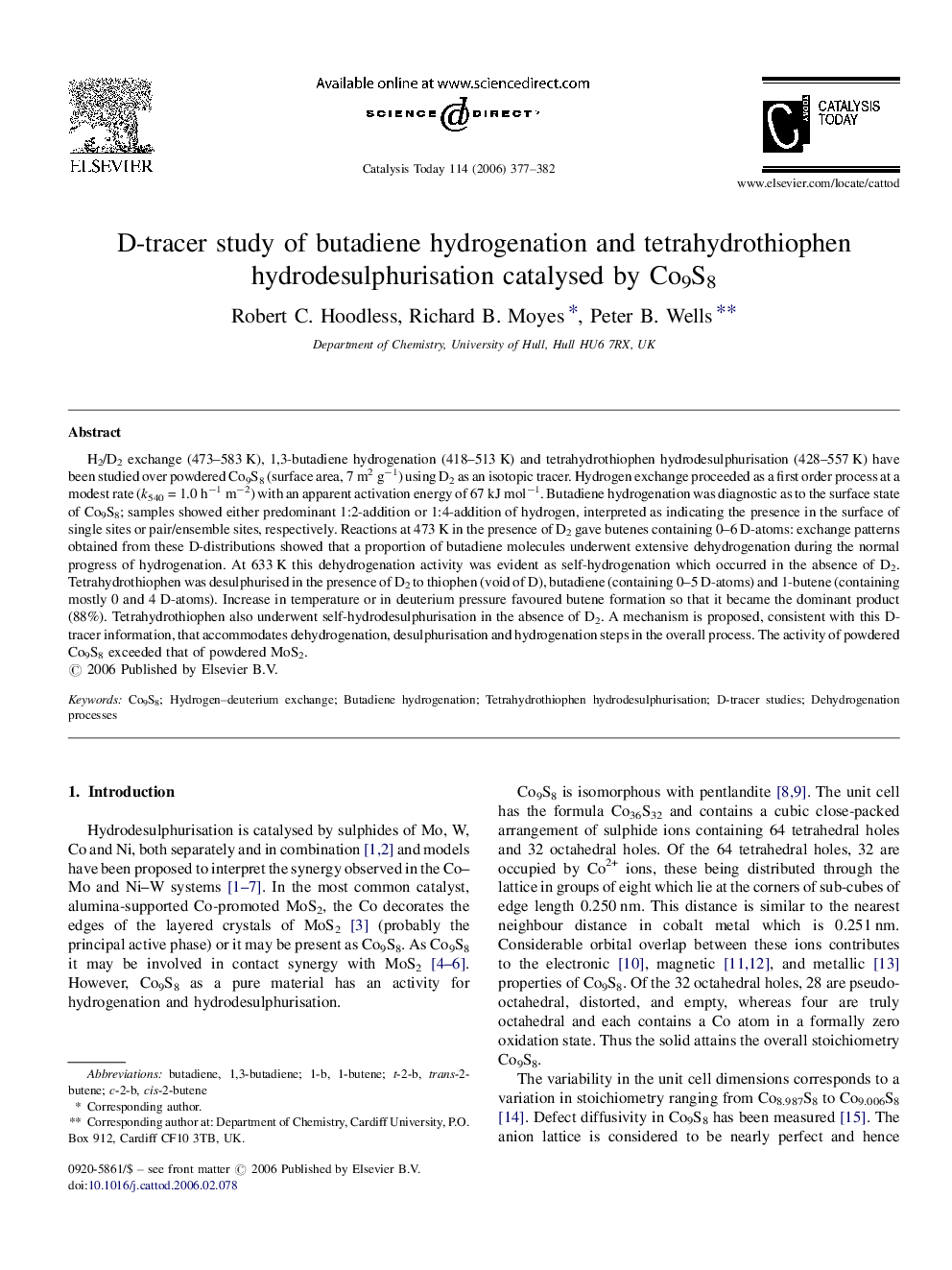| Article ID | Journal | Published Year | Pages | File Type |
|---|---|---|---|---|
| 58691 | Catalysis Today | 2006 | 6 Pages |
H2/D2 exchange (473–583 K), 1,3-butadiene hydrogenation (418–513 K) and tetrahydrothiophen hydrodesulphurisation (428–557 K) have been studied over powdered Co9S8 (surface area, 7 m2 g−1) using D2 as an isotopic tracer. Hydrogen exchange proceeded as a first order process at a modest rate (k540 = 1.0 h−1 m−2) with an apparent activation energy of 67 kJ mol−1. Butadiene hydrogenation was diagnostic as to the surface state of Co9S8; samples showed either predominant 1:2-addition or 1:4-addition of hydrogen, interpreted as indicating the presence in the surface of single sites or pair/ensemble sites, respectively. Reactions at 473 K in the presence of D2 gave butenes containing 0–6 D-atoms: exchange patterns obtained from these D-distributions showed that a proportion of butadiene molecules underwent extensive dehydrogenation during the normal progress of hydrogenation. At 633 K this dehydrogenation activity was evident as self-hydrogenation which occurred in the absence of D2. Tetrahydrothiophen was desulphurised in the presence of D2 to thiophen (void of D), butadiene (containing 0–5 D-atoms) and 1-butene (containing mostly 0 and 4 D-atoms). Increase in temperature or in deuterium pressure favoured butene formation so that it became the dominant product (88%). Tetrahydrothiophen also underwent self-hydrodesulphurisation in the absence of D2. A mechanism is proposed, consistent with this D-tracer information, that accommodates dehydrogenation, desulphurisation and hydrogenation steps in the overall process. The activity of powdered Co9S8 exceeded that of powdered MoS2.
